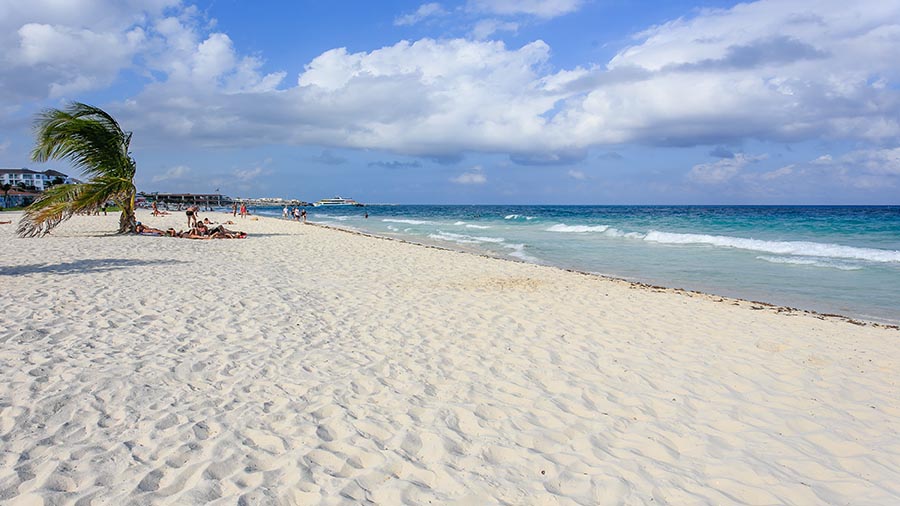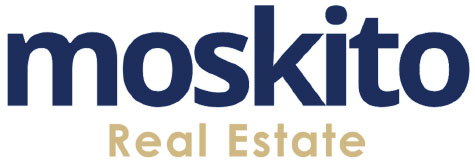History and Cultural Aspects of Mexico

Deeply rich and colorful, Mexico’s vibrant culture is evident wherever you look. It has a spirit that soaks itself into the art, the architecture, the food and the literature. Mexico is covered with murals, littered with galleries, carries a deep folk-art tradition and has produced some of the world’s most renowned painters. Its ancient civilizations have produced some of the most spectacular architecture ever built, while its modern proponents deliver some ground-breaking examples of contemporary design. And its writers, such as Carlos Fuentes and Octavio Paz, poetically evoke the Mexican psyche.
Pre 20th Century History
It’s thought that the first people to inhabit Mexico arrived 20,000 years before Columbus. Their descendants built a succession of highly developed civilizations that flourished from 1200 BC to 1521 AD. The first ancestral civilization to arise was that of the Olmecs (1200-600 BC), in the humid lowlands of southern Veracruz and Tabasco. By 300 BC they were joined by the Zapotecs of Oaxaca, and the temple centre of Izapa (200 BC to 200 AD). By 250 AD the Maya were building stepped temple pyramids in the Yucatan Peninsula. Central Mexico’s first great civilization flourished at Teotihuacán between 250 and 600 AD, to be followed by the Toltecs at Xochicalco and Tula. The Aztecs were successors to this string of empires, settling at Tenochtitlán in the early 14th century.
Almost 3000 years of civilization was shattered in just two short years, following the landing by Hernán Cortés near modern-day Veracruz on April 21, 1519. Primary sources suggest that the Aztecs were initially accommodating because, according to their calendar, the year 1519 promised the god Quetzalcóatl’s return from the east. The Spaniards met their first allies in towns that resented Aztec domination. With 6000 local recruits, they approached the Aztecs’ island capital of Tenochtitlán – a city bigger than any in Spain. King Moctezuma II invited the party into his palace and the Spaniards promptly took him hostage. By August 13, 1521, Aztec resistance had ended. The position of the conquered peoples deteriorated rapidly, not only because of harsh treatment at the hands of the colonists but also because of introduced diseases. The indigenous population fell from an estimated 25 million at the time of conquest to one million by 1605.
From the 16th to 19th centuries, a sort of apartheid system existed in Mexico. Spanish-born colonists were a minuscule part of the population but were considered nobility in New Spain (as Mexico was then called), however humble their status in their home country. By the 18th century, criollos (people born of Spanish parents in New Spain) had acquired fortunes in mining, commerce, ranching and agriculture, and were seeking political power commensurate with their wealth. Below the criollos were the mestizos, of mixed Spanish and indigenous or African slave ancestry, and at the bottom of the pile were the remaining indigenous people and African slaves. The catalyst for rebellion came in 1808 when Napoleon Bonaparte occupied most of Spain – direct Spanish control over New Spain suddenly ceased and rivalry between Spanish-born colonists and criollos intensified. On September 16, 1810, Miguel Hidalgo y Costilla, a criollo parish priest, issued his call to rebellion, the Grito de Dolores. In 1821 Spain agreed to Mexican independence.
Twenty-two years of chronic instability followed independence: the presidency changed hands 36 times. In 1845, the US congress voted to annex Texas, leading to the Mexican-American War in which US troops captured Mexico City. Under the Treaty of Guadalupe Hidalgo (1848), Mexico ceded Texas, California, Utah, Colorado and most of New Mexico and Arizona to the USA. The Maya rose up against their overlords in the late 1840s and almost succeeded in driving them off the Yucatán Peninsula. By 1862, Mexico was heavily in debt to Britain, France and Spain, who sent a joint force to Mexico to collect their debts. France decided to go one step further and colonize Mexico, sparking yet another war. In 1864, France invited the Austrian archduke, Maximilian of Habsburg, to become emperor of Mexico. His reign was bloodily ended by forces loyal to the country’s former president, Benito Juárez, a Zapotec from Oaxaca.
With the slogan ‘order and progress’, dictator Porfirio Díaz (ruled 1878-1911) avoided war and piloted Mexico into the industrial age. Political opposition, free elections and a free press were banned, and control was maintained by a ruthless army, leading to strikes that prefigured the Mexican Revolution.
Modern History
The revolution (1910-20) was a 10-year period of shifting allegiances between a spectrum of leaders, in which successive attempts to create stable governments were wrecked by new skirmishes. The basic ideological rift was between liberal reformers and more radical leaders, such as Emiliano Zapata, who were fighting for the transfer of hacienda land to the peasants. The 10 years of violent civil war cost an estimated 1.5 to two million lives – roughly one in eight Mexicans. After the revolution, political will was focused on rebuilding the national infrastructure. Precursors of today’s Party of the Institutionalized Revolution (PRI) took power in 1934, introducing a program of reform and land redistribution.
Civil unrest next appeared in 1966, when university students in Mexico City expressed their outrage with the conservative Díaz Ordaz administration. Discontent with single-party rule, restricted freedom of speech and excessive government spending came to a head in 1968 in the run-up to the Mexico City Olympic Games, and protesters were massacred by armed troops.
The oil boom of the late 1970s increased Mexico’s oil revenues and financed industrial and agricultural investments, but the oil glut in the mid 1980s deflated petroleum prices and led to Mexico’s worst recession in decades. The economic downturn also saw an increase in organized political dissent on both the left and right. The massive earthquake of September 1985 caused more than 4,000,000,000 in damage. At least 10,000 people died, hundreds of buildings in Mexico City were destroyed and thousands of people were made homeless.
President Carlos Salinas de Gortari began his term in 1988 after very controversial elections. He gained popular support by renegotiating Mexico’s crippling national debt and bringing rising inflation under control. A sweeping privatization program and a burgeoning international finance market led to Mexico being heralded in the international press as an exemplar of free-market economics. The apex of Salinas’ economic reform was the North American Free Trade Agreement (NAFTA), effective January 1, 1994.
Fears that NAFTA would increase the marginalization of indigenous Mexicans led to the Zapatista uprising in the southernmost state of Chiapas. The day NAFTA took effect, a huge army of unarmed peasants calling themselves the Ejército Zapatista de Liberación Nacional (EZLN) shocked Mexico by taking over San Cristóbal de Las Casas. Their demands focused on improved social and economic justice. The EZLN were driven out of town within a few days, but the uprising struck a chord among all those who felt that the gap between rich and poor was widening under Salinas and the NAFTA agreement. Today, the Zapatista movement (and the US government-sponsored, low-intensity warfare campaign) continues, and the rebels’ leader, a balaclava-clad figure known only as Subcomandante Marcos, is now a national folk hero.
Ernesto Zedillo, was elected with 50% of the vote in 1994. Within days of President Zedillo’s taking office, Mexico’s currency, the peso, suddenly collapsed, bringing on a rapid and deep economic recession. Among other things, it led to a intensified discontent with the PRI and caused large-scale Mexican immigration to the US. It’s estimated that by 1997 more than 2.5 million Mexicans a year were entering the US illegally. Zedillo’s policies pulled Mexico gradually out of recession. Despite a hiccup caused by international economic factors in 1998, by the end of his term in 2000, Mexicans’ purchasing power was again approaching 1994 levels.
Recent History
In the freest and fairest national election since the Mexican Revolution, National Action Party (PAN) presidential candidate and former Coca-Cola executive Vicente Fox beat Zedillo’s hand-picked successor, PRI candidate Francisco Labastida in 2000, ending the PRI’s 71-year reign; however, it remains the chief opposition party. President Fox has sought to emphasize Mexico’s role as a world player, and has strongly supported the US since the events of 9/11; security has been tightened on the northern border. In 2006 PAN won de elections again and Felipe Calderon has been Mexico´s President since that time.

Geography and Climate
Covering almost two million sq km (800,000 sq mi), Mexico follows a northwest to southeast curve, narrowing to the Isthmus of Tehuantepec then continuing to the Yucatán Peninsula. On the west and south the country is bordered by the Pacific Ocean, with the Gulf of California lying between the Baja California peninsula and the mainland. Mexico’s east coast is washed by the Gulf of Mexico, while the east coast of the Yucatán Peninsula meets the Caribbean Sea. Mexico shares borders with the USA (to the north), and Guatemala and Belize (to the southeast).
Bridging temperate and tropical regions, and lying in the latitudes that contain most of the world’s deserts, Mexico has an enormous range of natural environments and vegetation zones. Its rugged, mountainous topography adds to the variety by creating countless microclimates. Despite the potential for great ecological diversity, human impact has been enormous. Before the Spanish conquest, about two-thirds of the country was forested. Today, only one-fifth of the country remains verdant, mainly in the south and east.
Mexico’s climate varies according to its topography. It’s hot and humid along the coastal plains on both sides of the country, but inland, at higher elevations such as Guadalajara or Mexico City, the climate is much drier and more temperate. The hot, wet season is May to October, with the hottest and wettest months falling between June and September over most of the country. The low-lying coastal areas receive more rainfall than elevated inland regions. December to February are generally the coolest months, when north winds can make inland northern Mexico decidedly chilly, with temperatures sometimes approaching freezing.
In regards to the Yucatan Peninsula and the Quintana Roo region, the climate is hot and humid. The rainy season is mid – August to mid – October when you’ll get afternoon showers most days. The dryer and slightly cooler months are between November and March.
Government
Mexico is a Federal Republic, has a constitutional democracy and multiparty elections every six years. The current President is Mr. Felipe Calderon, head of state and government, whose term runs from December 1st, 2006 to December 1st, 2012.
Economy
Mexico has a free market economy that recently entered the trillion dollar class. It contains a mixture of modern and outmoded industry and agriculture, increasingly dominated by the private sector. Recent administrations have expanded competition in sea ports, railroads, telecommunications, electricity generation, natural gas distribution, and airports. Mexico is the world’s largest producer of silver and one of the five major producers of oil.
A strong export sector helped to cushion the economy’s decline in 1995 and led the recovery in 1996-99. Private consumption became the leading driver of growth, accompanied by increased employment and higher wages. The present administration is cognizant of the need to upgrade infrastructure, modernize the tax system and labor laws, and allow private investment in the energy sector, but has been unable to win the support of the opposition-led Congress. Mexico still needs to overcome many structural problems as it strives to modernize its economy and raise living standards.
Trade with the US and Canada has nearly doubled since NAFTA was implemented in 1994. Mexico is pursuing additional trade agreements with most countries in Latin America and has signed a free trade deal with the European Union and Japan.
Mexico’s economy ranked 10-14th (depending on the methodology used) measured in its Gross Domestic Product and Gross National Income. According to the World Bank, income per capita is the fourth (after Argentina, Chile and Costa Rica) in Latin America if measured as GDP (PPP) and the highest if measured as GNI, and the country is now firmly established as a middle-income country. However, huge gaps and inequality still remain in the distribution of wealth, between the industrialized northern and the poor rural communities of the south-eastern states. In spite of the economic disparities, Mexico is the only Latin American nation that has been admitted into the Organization for Economic Co-operation and Development, which is composed by developed countries and three newly industrialized nations: Mexico, Turkey and South Korea.
Judicial System
Mexico’s Judicial System counts with Federal courts which include the Supreme Court, with 21 magistrates; 32 circuit tribunals and 98 district courts, with one judge each. Special courts include a fiscal tribunal and boards of conciliation and arbitration.
Supreme Court magistrates are appointed for life by the president, with the approval of the Senate, and can be removed only by a guilty verdict after impeachment. The other justices are appointed for six years by the Supreme Court magistrates. The Supreme Court has both original and appellate jurisdiction in four divisions: administrative, civil, labor, and penal. Circuit courts hear appeals from the district courts.
The jury system is not commonly used in Mexico, but judicial protection is provided by the Writ of Amparo, which allows a person convicted in the court of a local judge to appeal to a federal judge. Capital punishment, except in the army for crimes against national security, was abolished by the penal code of 1 January 1930.
Although the judiciary is constitutionally independent and judges are appointed for life (unless dismissed for cause), there have been charges that judges are sometimes partial to the executive. Low pay and high caseloads contribute to a susceptibility to corruption in the judicial system. In unprecedented moves in 1993, the government issued an arrest warrant for obstructing justice and for bribery against a former Supreme Court Justice and three federal judges were dismissed for obstructing justice.
In 1995, Congress passed a judicial reform law. The judicial reform law provides for a competitive examination for selecting most lower and appellate federal court judges and law secretaries. The Supreme Court has the authority to strike down a law for unconstitutionality. The judicial reform law provides that the Supreme Court may declare a law unconstitutional when one-third of the congress, one-third of a state congress, or the Attorney General asks the Supreme Court to review the constitutionality of the law.
The judicial trial system is based on the Napoleonic Code and consists of a series of fact-gathering hearings. The record of the proceeding is not available to the public.
After the 2000 presidential election and the end of PRI control of the presidency, the Supreme Court and the judicial power in general has shown signs of greater autonomy and more independence from the elected authorities. The judiciary has consolidated as an independent power of the Mexican state.



